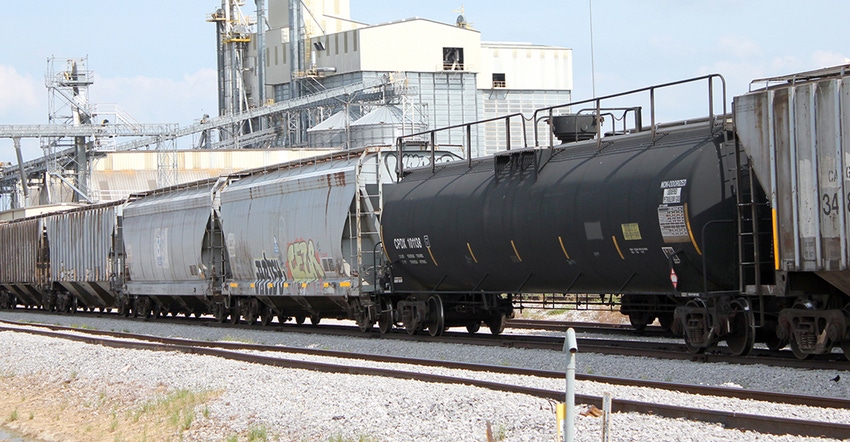
$3.5 billion a day. That’s how much money is at stake if the new administration continues to jeopardize relations with two of its largest trading partners, according to a panel of experts who spoke at the National Grain and Feed Association’s annual meeting in New Orleans.
In recent months, President Trump has infuriated Mexico’s citizens with his plans to build a wall along the 1,989-mile border between the two countries. His comments about NAFTA have added fuel to the trade discord between the U.S. and both Mexico and Canada.
Speakers at the NGFA annual meeting said there are areas where the North American Free Trade Agreement – or any trade agreement – could be improved, but that it was essential the U.S. government “preserve the tremendous benefits NAFTA has provided the economies of the United States, Canada and Mexico, especially the food and agriculture sector.”
John Murphy, senior vice president, international policy for the U.S. Chamber of Commerce, said the value of trade between Mexico, the United States and Canada averages $3.5 billion a day. “The economies of the three countries are tightly bound to one another,” he said. “We make things together.”
Murphy was joined on the panel by Pat Ottensmeyer, president and chief executive officer, Kansas City Southern Railway, Kansas City, Mo., who moderated the session, and Gary Martin, president and chief executive of the North American Export Grain Association in Washington.
Half of operations
Ottensmeyer said half his railway’s operations are in Mexico, Kansas City Southern Railway having invested heavily in developing its railway in Mexico and counting on Mexican industry and agribusiness to provide many of its largest customers.
Kansas City Southern transports 35 percent of U.S. corn exported to Mexico. He said four of five of this railroad’s discrete capital projects currently planned or under way will be in Mexico. These projects will continue unless Mexican customers pull back in the event trade conditions deteriorate.
Ottensmeyer recently visited with several members of the Trump administration and congressional leaders and said there was a willingness to listen to industry’s concerns. He said it was essential other corporate executives to press their case now in Washington.
How could NAFTA be improved? Murphy noted the 23-year-old agreement was negotiated before the Internet and e-commerce burst upon the scene. But the effort should be to improve what’s in the agreement while making needed adjustments. Any notion of breaking up NAFTA in favor of bilateral agreements, one with Canada and one with Mexico, should be rejected, he said.
Food and Agriculture Dialogue
Martin encouraged NGFA members to participate with the U.S. Food and Agriculture Dialogue for Trade, which seeks to educate policymakers on the importance trade and trade agreements. These extend beyond NAFTA to include other trade agreements and the Trans-Pacific Partnership process, which continues even after the withdrawal of the United States. “It’s time to redouble efforts,” Martin said.
The U.S. Food and Agriculture Dialogue for Trade, a coalition of 133 companies and trade organizations representing more than 15 million jobs in the U.S. food and agricultural industry, has written the president asking him to modernize NAFTA, “but preserve the significant gains the industry has made.
The letter from major food companies and farm groups said U.S. food and agricultural exports have produced a consistent trade surplus over the last half century. During the last 25 years, the letter states, the amount of U.S. food exported worldwide has steadily risen in both value and volume.
While there are some tariffs that stand in the way of U.S. exports, the letter said NAFTA has brought a windfall to U.S. farmers and food producers. Since NAFTA went into effect, U.S. food and agriculture exports to Mexico and Canada have more than quadrupled from $8.9 billion in 1993 to $38.6 billion in 2015.
For more information on this issue, visit http://bit.ly/2ktNQSU
About the Author(s)
You May Also Like






